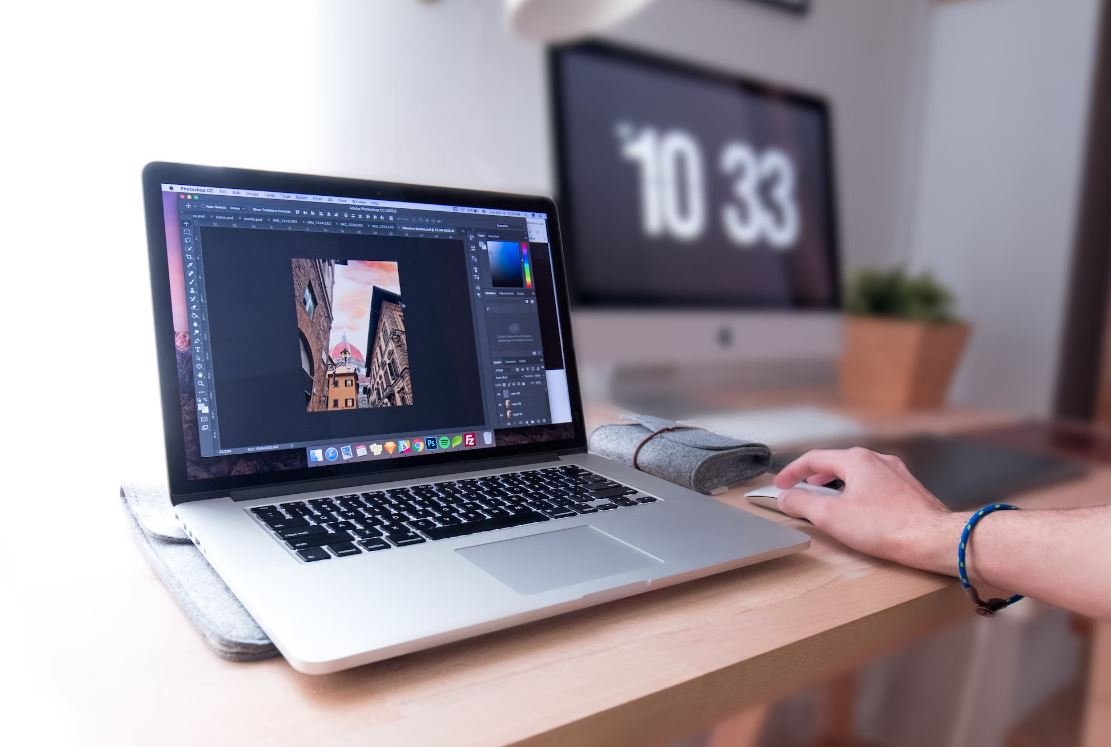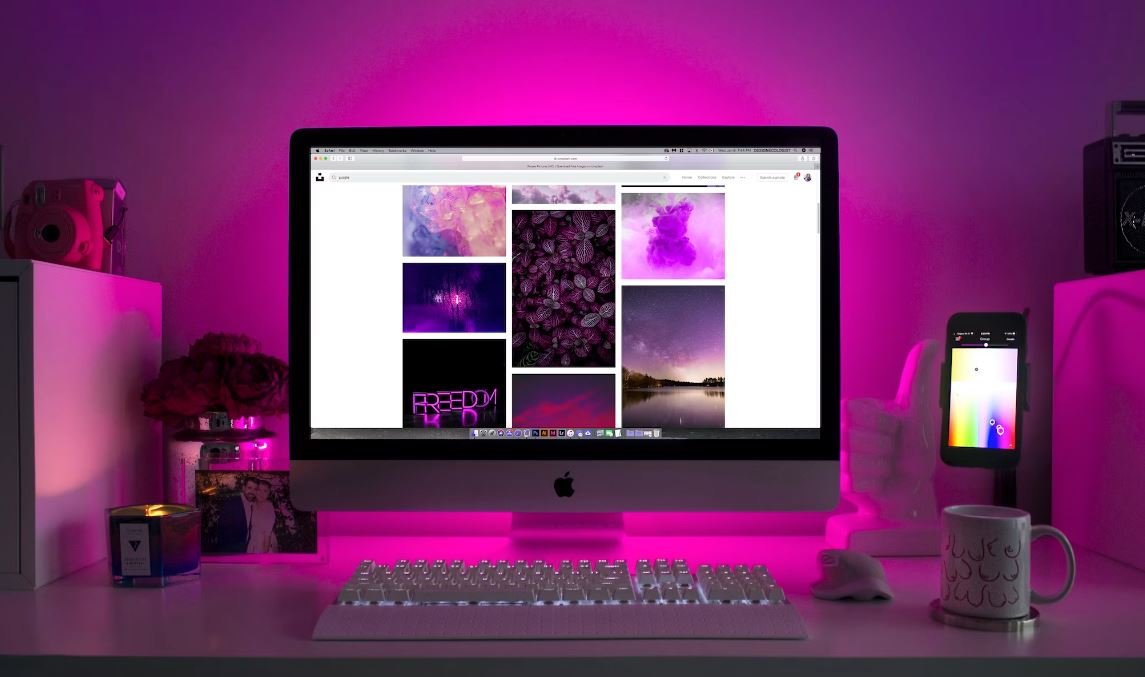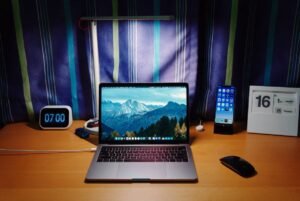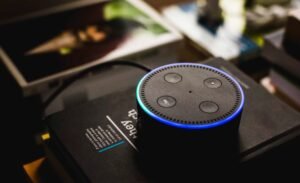Generative Art Wiki
Generative art is a form of art that is created using algorithms and computer programs, resulting in unique and dynamic artworks. It is a constantly evolving field that combines technology, creativity, and mathematics to produce visually stunning and thought-provoking pieces. This article aims to provide an introduction to generative art, its history, key techniques, and notable artists in the field.
Key Takeaways:
- Generative art is an innovative form of art created using algorithms and computer programs.
- This type of art combines technology, creativity, and mathematics.
- Generative art produces visually stunning and thought-provoking artworks.
The History of Generative Art
Generative art has its roots in the 1960s, when artists started utilizing computers as a creative tool. **Using programming languages**, such as FORTRAN and BASIC, artists could create visual art by inputting specific instructions and parameters. *This allowed for the exploration of complex patterns and structures that were otherwise impossible to achieve manually.* The field of generative art gained momentum in the 1980s with the growth of personal computers and software developments.
Key Techniques in Generative Art
- Algorithmic Generation: Artists design algorithms to generate artwork automatically based on predefined rules and parameters.
- Randomness and Stochastic Processes: Artists use random number generators and stochastic processes to introduce elements of chance and unpredictability in their artworks.
- Evolutionary Computation: Artists create systems inspired by biological evolution where algorithms generate and evolve through iterations.
Notable Artists in Generative Art
| Artist | Notable Works |
|---|---|
| Harold Cohen | AARON – an autonomous drawing machine |
| Vera Molnar | Geometrical and algorithmic compositions |
| Casey Reas | Coded visualization systems |
Generative Art Applications
Generative art finds applications in various fields, including **advertising**, *data visualization*, and interior design. *Data-driven generative art*, for example, is used to represent complex data sets in visual forms, allowing for easier analysis and interpretation. Artists and designers can leverage generative art techniques to create visually captivating and customized designs for various applications.
Conclusion
Generative art is a fascinating field that continues to push the boundaries of creativity and technology. Its roots date back to the 1960s, and it has since evolved into a vibrant and multidisciplinary practice. By integrating algorithms, randomness, and evolutionary systems, generative art produces visually captivating and thought-provoking pieces that inspire and ignite the imagination.

Common Misconceptions
Misconception 1: Generative art is just random and lacks purpose
One common misconception about generative art is that it is simply a random process without any meaning or purpose. However, generative art is much more than just random patterns or designs. It often involves algorithms and rules that guide the creation process, resulting in intricate and complex artworks with deep meanings.
- Generative art involves the use of algorithms and rules to create meaningful and purposeful artworks.
- The randomness in generative art is often controlled and guided by the artist’s intentions and concepts.
- Generative art can convey emotions, explore patterns in nature, or serve as a commentary on societal issues.
Misconception 2: Generative art is easy to create and requires no artistic skill
Another misconception is that generative art is an effortless process that requires no artistic skill. In reality, creating meaningful generative art often requires a combination of technical skills, artistic talent, and a deep understanding of algorithms and computational processes.
- Generative art requires knowledge of programming languages and software tools.
- Artistic skills are necessary to shape and refine the generated artworks.
- An understanding of aesthetics and composition is crucial in creating visually appealing generative art pieces.
Misconception 3: Generative art is just computer-generated and lacks human creativity
There is a common misconception that generative art is solely created by computers and lacks human creativity. While computers play a significant role in the creation process, generative art is ultimately a collaboration between human artists and computational systems.
- Generative art often requires human input in shaping the algorithms and rules used in the process.
- Artists make creative decisions throughout the generative art creation process.
- Generative art can be seen as an exploration of the interplay between human intent and computational systems.
Misconception 4: Generative art is limited to digital mediums
Some people believe that generative art is limited to digital mediums such as computer screens or projection displays. However, generative art can manifest in various forms, including traditional visual arts, sculpture, music, and even performance art.
- Generative art can be created using traditional art materials and techniques, such as pens, brushes, and paint.
- It can also involve physical objects and installations that evolve over time.
- Generative music explores the creation of soundscapes through algorithms and live performances.
Misconception 5: Generative art is only appreciated by technical audiences
An incorrect belief is that generative art is only appealing to a technical audience who have an understanding of algorithms and programming. In reality, generative art has the ability to captivate and resonate with a wide range of audiences, regardless of their technical background.
- Generative art can evoke emotions and create aesthetic experiences that transcend technical knowledge.
- Its visually intriguing nature can attract art enthusiasts from all walks of life.
- The conceptual depth of generative art can spark intellectual curiosity and discussions among diverse audiences.

Introduction
Generative art is a form of art that is created using algorithms, mathematical equations, and computer software. It consists of visual representations that are generated by a set of rules or instructions. This article aims to showcase the fascinating aspects of generative art through a series of interactive and visually appealing tables.
Table 1: World-renowned Generative Artists
Explore the astounding creativity and talent of some of the most accomplished generative artists worldwide. This table presents their names and a glimpse into their notable works.
| Artist Name | Notable Works |
|——————|———————————————|
| Marius Watz | “Arcs” (2005) and “Phantoms” (2012) |
| Vera Molnár | “Basic Structures” series (1976) |
| Casey Reas | “Processing” programming language (2001) |
| Manfred Mohr | “Klangfarben I” (1990) and “One and One” |
| Frieder Nake | “Module 256” (1969) and “Broken Lines” |
| Karin Sander | “Exposé” (1991) and “161 Colors” (2016) |
| Harold Cohen | “AARON” painting software (1970s – 2010s) |
| Roman Verostko | “The Computer as a Creative Medium” (1992) |
| Jon McCormack | “Turbo” (1994) and “Biological Habitat” |
| Lia Cook | “Generative Brainwaves” (2019) |
Table 2: Evolution of Generative Art Software
This table showcases the evolution of generative art software, capturing key moments in its development and the corresponding advancements made.
| Year | Software | Notable Features |
|———|————————————————|————————————————–|
| 1962 | GRAFLOG | First program enabling generative art creation |
| 1979 | AARON | Capable of autonomously creating art |
| 1991 | Processing | Prominent programming language for generative art |
| 2001 | CINDER | Integrated development environment for generative art |
| 2005 | NodeBox | Graph-based generative design software |
| 2010 | openFrameworks | Creative coding toolkit for artists |
| 2014 | Quil | Functional programming language for generative art |
| 2016 | p5.js | JavaScript library for creative coding |
| 2018 | TouchDesigner | Real-time visual development platform |
| 2020 | VVVV | Multipurpose toolkit for creative coding |
Table 3: Colors in Generative Art
Colors play a vital role in generative art, evoking emotions and enhancing visual appeal. This table explores the use of colors in different generative artworks.
| Artwork | Color Palette |
|——————————|—————————|
| “Genesis” by Refik Anadol | Vibrant and Neon |
| “Lunar Surface Generator” | Monochromatic and Grayscale |
| “Solaris” by Manfred Mohr | Abstract and Bold |
| “Harmonic Tremor” by Ryoji Ikeda | Minimalistic and High Contrast |
| “Floraculture” by Casey Reas | Soft and Pastel |
| “Harmograph” by Golan Levin | Dynamic and Gradient |
| “Inner-Space” by Marius Watz | Neon and Glowing |
| “FRACT” by Alexander Pfander | Iridescent and Shimmering |
| “Entropy” by Vera Molnár | Chromatic and Rainbow |
| “Dripstat” by Joshua Davis | Chaotic and Multicolored |
Table 4: Influence of Nature in Generative Art
Nature has been a significant source of inspiration for generative artists. This table highlights various aspects of nature that have influenced their artworks.
| Nature Element | Artist | Notable Artwork |
|——————–|————————–|———————————————————-|
| Geometric Patterns | Manfred Mohr | “Klangfarben I” (1990) and “One and One” |
| Fluid Dynamics | Casey Reas | “ExFormation” (2018) and “Process 15” (2004) |
| Fractals | Marius Watz | “Arcs” (2005) and “Phantoms” (2012) |
| Cellular Automata | Vera Molnár | “The Night Ascending…” (2014) and “The Hypoallergenic Yes” |
| Ecosystems | Jon McCormack | “Biological Habitat” and “Turbulence” |
| Bioluminescence | Ryoji Ikeda | “The Transfinite” (2001) and “supercodex” (2013) |
| Botanical Forms | Karin Sander | “161 Colors” (2016) and “BTable 5: Generative Art Exhibitions
Generative art exhibitions provide a platform for artists to showcase their works and inspire others. Explore some well-known exhibitions in this table.
| Exhibition Name | Year | Location |
|———————–|——–|—————–|
| “Code Art Fair” | 2019 | Copenhagen, DK |
| “The Algorithmic Art” | 2016 | San Francisco, US |
| “Art+Code” | 2017 | Pittsburgh, US |
| “Generate” | 2014 | New York City, US |
| “Computer Grrrls” | 2018 | Karlsruhe, DE |
| “Art of Coding” | 2019 | Helsinki, FI |
| “AR/VR Art Show” | 2016 | Los Angeles, US |
| “Generative Processes”| 2020 | Berlin, DE |
| “Art & Algorithms” | 2015 | Titusville, US |
| “DATA/SHAW” | 2017 | Vancouver, CA |
Table 6: Popular Generative Art Styles
Generative art encompasses a wide range of styles, each intriguing and unique. This table highlights some popular styles and their characteristics.
| Style | Characteristics |
|————————–|——————————————————————————–|
| Algorithmic Art | Creation using mathematical algorithms and procedural rules |
| Abstract Geometry | Geometric shapes and patterns forming abstract compositions |
| Data Visualization | Translating complex data into visually compelling and informative artworks |
| Computational Photography| Blending traditional photography techniques with generative algorithms |
| Interactive Installations| Immersive artworks that respond to viewer presence and engage with the audience|
| Generative Typography | Typeface design based on generative algorithms and parametric rules |
| Biomorphic Art | Organic and living forms inspired by nature and organisms |
| Audio-Visual Synthesis | Combining generative visuals with synchronized audio for multi-sensory experience|
| Glitch Art | Deliberate manipulation of digital data to create unexpected visual anomalies |
| Dynamic Systems Art | Artworks shaped by the behavior and interactions of dynamic systems |
Table 7: Advancements in Generative Art Hardware
Generative art has witnessed significant advancements in hardware that have revolutionized the creative process. Discover key advancements in this table.
| Year | Advancement | Significance |
|———|————————————————–|——————————————————-|
| 1967 | IBM 360 Mainframe Computer | Early computer technology enabling generative art |
| 1982 | Apple Macintosh | Integrated personal computer for creative tasks |
| 1995 | Wacom Tablets and Pens | Intuitive and precise digital drawing input devices |
| 2005 | Arduino | Microcontroller used for interactive generative art |
| 2018 | Graphic Tablets with Pressure Sensitivity | Enhanced control and expression in digital artwork |
| 2020 | Generative GPUs (Graphics Processing Units) | Accelerated real-time rendering of complex visuals |
| 2021 | Neural Processing Units (NPUs) | AI-powered hardware enabling intelligent generative art|
| 2022 | VR/AR Headsets | Immersive environments for generative art experiences |
| 2025 | Haptic Feedback Devices | Tactile sensations enhancing interaction with artworks|
| 2030 | Quantum Computing | Unlocking unprecedented computational possibilities |
Table 8: Generative Art in Popular Culture
Generative art has made its presence known in popular culture, influencing diverse fields. Dive into this table to discover notable instances.
| Medium | Field | Example |
|————————|——————————–|————————————————–|
| Film | Title Sequences | “Spider-Man: Into the Spider-Verse” (2018) |
| Fashion | Textile Design | Alexander McQueen’s “Alien Nation” collection |
| Music | Album Art and Visualizers | “Random Access Memories” by Daft Punk |
| Architecture | Facade Design | The Millennium Dome in London |
| Gaming | Procedural Generation of Worlds| “No Man’s Sky” |
| Advertising | Interactive Campaigns | Nike’s “Generative Run” campaign |
| Literature | Book Covers and Artworks | “S.” by J.J. Abrams and Doug Dorst |
| Television | Game Show Visuals | “Jeopardy!” and “Wheel of Fortune” |
| Marketing Campaigns | Interactive Installations | The Coca-Cola Company’s “Generative Art Gallery” |
| Product Design | Parametric 3D Printing | Nervous System’s Kinematics Dress |
Table 9: Generative Art Platforms and Communities
Generative art platforms and communities provide resources, support, and collaboration opportunities for artists. Discover well-known platforms in this table.
| Platform | Key Features |
|—————–|—————————————————-|
| Behance | Showcase artworks and connect with other artists |
| OpenProcessing | Sharing and running Processing sketches online |
| DeviantArt | Dedicated section for generative art creations |
| Glitch Artists | Online group exploring the beauty of glitch art |
| CreativeApplications | Daily coverage of creative projects and experiments |
| TouchDesigner Forum | Community forum for users of TouchDesigner |
| Processing Foundation | Organization supporting the Processing community |
| Generative.Space | Online gallery for sharing generative creations |
| Artstation | Portfolio platform with a dedicated generative art category |
| TheNewAesthetic | Platform exploring modern aesthetics and culture |
Table 10: The Impact of Generative Art
Generative art continues to have a profound impact on various fields, from technology to fine arts. Explore the lasting implications in this table.
| Field | Impact |
|————————-|———————————————————————————————|
| Science | Visualization of complex data for better understanding |
| Design | Exploration of new aesthetic possibilities and innovative solutions |
| Education | Integration of creative coding in STEAM curricula and enhancing digital skills |
| Artificial Intelligence | Utilization of generative models in AI research and creative applications |
| Medicine | Therapeutic benefits of engaging with generative art, aiding in emotional well-being |
| Entertainment | Immersive and interactive generative art experiences in games, films, and virtual reality |
| Marketing and Branding | Unique and captivating visuals that redefine brand identities and attract audience attention |
| Psychology | Exploration of perception and emotional response through generative art experiments |
| Architecture | Generation of parametric designs and simulation of complex structures |
| Social Activism | Art as a medium for addressing social and political issues, fostering dialogue and empathy |
Conclusion
Generative art’s evolution has been shaped by the imagination and technical prowess of talented artists, the continuous advancements in hardware and software, and the exploration of various themes drawn from nature and popular culture. Through the diverse styles, groundbreaking exhibitions, and vibrant communities, generative art has made a lasting impact across disciplines, leaving us in awe of its creative possibilities. As we delve deeper into this realm, the bounds of imagination and innovation are bound to be further explored, leading to exciting new frontiers in the world of artistic expression.
Frequently Asked Questions
What is generative art?
Generative art refers to art that is created using a defined set of rules or algorithms, often with the aid of a computer program. It is a form of art where the artist sets the parameters and rules, allowing the artwork to generate itself.
How is generative art different from traditional art?
Generative art differs from traditional art in that the artist provides a set of instructions or algorithms for the artwork to follow, and the artwork itself is created using these instructions. Traditional art, on the other hand, is typically created by direct human intervention without the use of algorithms or rules.
What are some common techniques used in generative art?
Some common techniques used in generative art include fractal patterns, cellular automata, random number generation, evolutionary algorithms, and procedural generation. These techniques allow for a wide range of possibilities and can result in highly complex and diverse artworks.
What tools and software are commonly used in generative art?
Generative artists often use programming languages such as Processing, Max/MSP, or JavaScript to create their artworks. They also employ software tools or libraries specifically designed for generative art, such as Generative Design, OpenFrameworks, or Cinder.
Can anyone create generative art?
Yes, anyone with an interest in art and a willingness to learn can create generative art. Basic knowledge of programming may be helpful, but it is not always necessary as there are visual programming environments specifically for creating generative art.
What are the advantages of generative art?
Generative art allows for the creation of highly unique, intricate, and complex artworks that may not be easily achievable through traditional means. It can also explore patterns and aesthetics that go beyond human imagination. Generative art can serve as a catalyst for creativity and experimentation.
How can generative art be showcased or exhibited?
Generative art can be showcased and exhibited through a variety of mediums such as digital displays, projections, interactive installations, or physical prints. It can be displayed in traditional art galleries, museums, online platforms, or at specialized events and conferences.
What are some famous generative art projects?
Some famous generative art projects include “Aarrrt.com” by Ken Perlin, “The Johnny Cash Project” by Aaron Koblin, and “Nature of Code” by Daniel Shiffman. These projects showcase the diversity and potential of generative art in various forms.
Can generative art be sold?
Yes, generative art can be sold just like any other form of art. It can be sold through online platforms, galleries, or directly by the artist. Limited edition prints or digital copies are often sold to collectors as well.
Are there any organizations or communities for generative artists?
Yes, there are several organizations and communities for generative artists. Some notable ones include the International Generative Art Conference, Creative Applications Network, and the Processing Foundation. These communities provide platforms for discussion, collaboration, and sharing of generative artworks.




